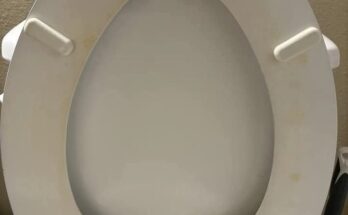by: Nina Ross
June 14, 2025

Source: 1stdibs.com
Many of the most interesting finds aren’t in museums — they are stashed in old houses where we rarely get to see them, hidden in attics, basements, or behind layers of dust on a wall. That’s precisely what we have here; a spotlight-grabbing, globe-like object, standing atop a shining wooden plinth. But do not mistake it for a whimsical oddity. It’s a Sestrel binnacle compass dating to WW2, a vintage navigation instrument that once guided giant vessels through uncharted waters, long before the days of GPS and satellite navigation.
What Is a Binnacle Compass?
Before digital navigation, navigation on the seas was done with the help of magnetic compasses. But iron ships and volatile weather could disturb compass readings. So, it was the compass that sat inside a protective enclosure called a binnacle, located on deck near the ship’s wheel so the helmsman could easily read it. This design is similar to the binnacle used for the WW2-era Sestrel binnacle compass.
The binnacle was not only the home of the compass. It also had “corrector magnets” — those red and green knobs you see on the side. These magnets served to cancel out the effect of the ship’s metal hull, permitting more accurate navigation. These tools could be counted on even in the tumult of war to steer a sailor in the right direction.

Sestrel: A Reliable Brand On the Water
The lettering on the brass plate — Sestrel — is the name of a well-regarded British nautical instrument maker, Henry Browne & Son Ltd. Founded during the 19th century, the firm became famous for precision compasses and sextants for boats under the Sestrel brand (from “sextant” and “Sestrel”). The WW2-era Sestrel binnacle compass was one of their most crucial creations.
In World War II, Sestrel compasses were the only compasses of the Royal Navy and merchant ships. Sailors depended on them for their durability, accuracy and the capacity to hold up in the most unforgiving weather.

A Closer Look at the Design
This one in particular is a binnacle compass on stand (preset mount binnacle compass) primarily used on larger vessels such as destroyers and merchant ships. Here’s what makes it special:
Brass Shell:The curved brass jacket was protected the interior mechanism in rust, rain and salty sea air.
Peephole: A slanted glass window in the top allowed navigators to read the compass without opening the unit.
Correction Domes: The cylinder-shaped exhibits on either side at one time contained magnets to compensate for magnetic distortion.
Green/Red Handles: These handles indicate port (red) and starboard (green), using traditional marine color designations.
Oil Filled Compass Bowl: The compass is floating and liquid filled (like a compass on Horace Kephart’s knife). This configuration anchors the needle during rough waters, to give the optimum, clear read as you navigate your way around the coast.

A Piece of the Sea’s Past in Your Home
A Sestrel binnacle compass is a bit of WWII history in your hands. Imagine it at the bridge of a ship, guiding sailors through fog, darkness, and treacherous seas. The WW2-era Sestrel binnacle compass remains today as a perfectly preserved relic of that time — one that can still be used every day and looks awesome to boot.
Those collectors and fans of nautical history also prize these compasses for their beauty. They hark back to a time when seamanship was a area where tools, training and intuition were equally indispensable. The Sestrel compass wasn’t just a device — it was a lifeline for travelers crossing the wide and wild oceans.


